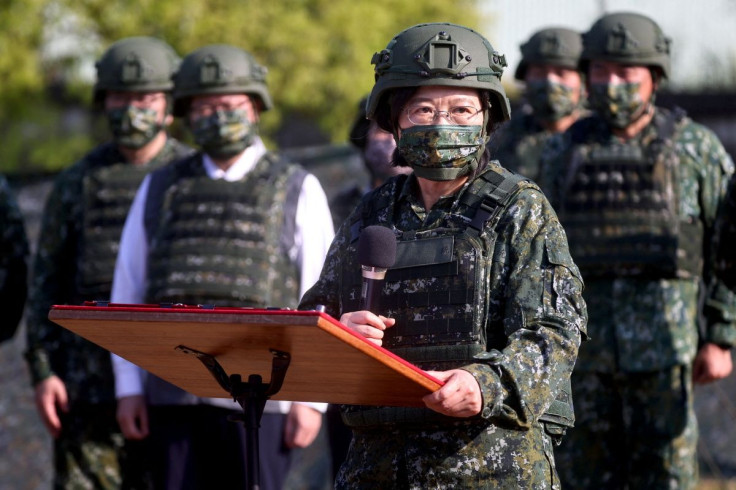Taiwan Swift To Learn From Ukraine; Developing Military Drones To Fight China
KEY POINTS
- Taiwan is planning an aerospace park to develop artificial intelligence and drone technology
- So far, Taiwan has only two models of attack drones, which are yet to be mass-produced
- Analysts think it is already too late for Taiwan to catch up with Chinese UAV technology
Ukrainian forces putting up a courageous fight against a much-stronger Russian troop is now a tale of inspiration, and Taiwan is wasting no time imbibing valuable lessons from it. The island nation is now speeding up the development of UAVs, seeing how efficient drones were against the invading forces in Ukraine.
Taiwanese President Tsai Ing-wen has announced that it was "highly necessary" for the island to develop drones, regardless of whether it is for military or civilian use, reported South China Morning Post.
Tsai made the statement Sunday during a visit to the southwestern city of Chiayi where the local government is planning an aerospace park to research and develop artificial intelligence and drone technology. Here, Taiwan's top weapon developer, the National Chung-Shan Institute of Science and Technology, will work with local developers to build state-of-the-art drones.
Taiwan has already taken baby steps in this regard. So far, Chung-Shan institute has developed four models of military drones. Two models – the Albatross 2 and Cardinal 2 - are used for surveillance and reconnaissance, especially to track the People’s Liberation Army’s movements. However, both models have suffered many crashes.
The next two models are primarily for attack purposes. While the Chien Hsiang (Rising Sword) is designed to destroy ground facilities in high-speed kamikaze attacks, Teng Yun 2 (Cloudrider) with two Hellfire missiles is a great attack weapon. However, both are yet to be mass-produced.
"Because both types of drones have destructive power, they will play an important role in a potential war with the PLA in the future," an anonymous source told the news outlet.
But, the road toward developing drones that can challenge PLA weapons would be tough as Taiwan had so far only focused on developing fighter jets and warships rather than drones in the past.
“At present, our military drones can only carry out surveillance and reconnaissance missions," Chieh Chung, a senior researcher at National Policy Foundation, a think tank affiliated with the main opposition party Kuomintang, told South China Morning Post.
"If those drones identified a target, they would have to send back the information to the military’s strike force – potentially resulting in a delay that allowed the target to escape," he added.
Chinese analysts too think it was already too late for Taiwan to catch up with Chinese UAV technology. According to Zhou Chenming, a researcher from the Yuan Wang military science and technology think tank in Beijing, Taiwan would need a "huge investment" in the sector.
"Besides research and development costs, you also need to build a specific communication system to connect with military and weapon control systems. Mainland China’s UAV technology has been developed under the support of its comprehensive satellite networks, which took several decades to build up," Zhou told the news outlet.
Recently, reports had said that Taiwan's military strategists are closely watching the situation, including Russia’s use of precision missiles and Ukraine’s tactical resistance. The island nation is now focusing on "asymmetric warfare," an idea championed by Taiwanese President Tsai Ing-wen, which focuses on high-tech, mobile and vehicle-mounted missiles designed to make any Chinese attack as difficult as possible.

© Copyright IBTimes 2024. All rights reserved.





















